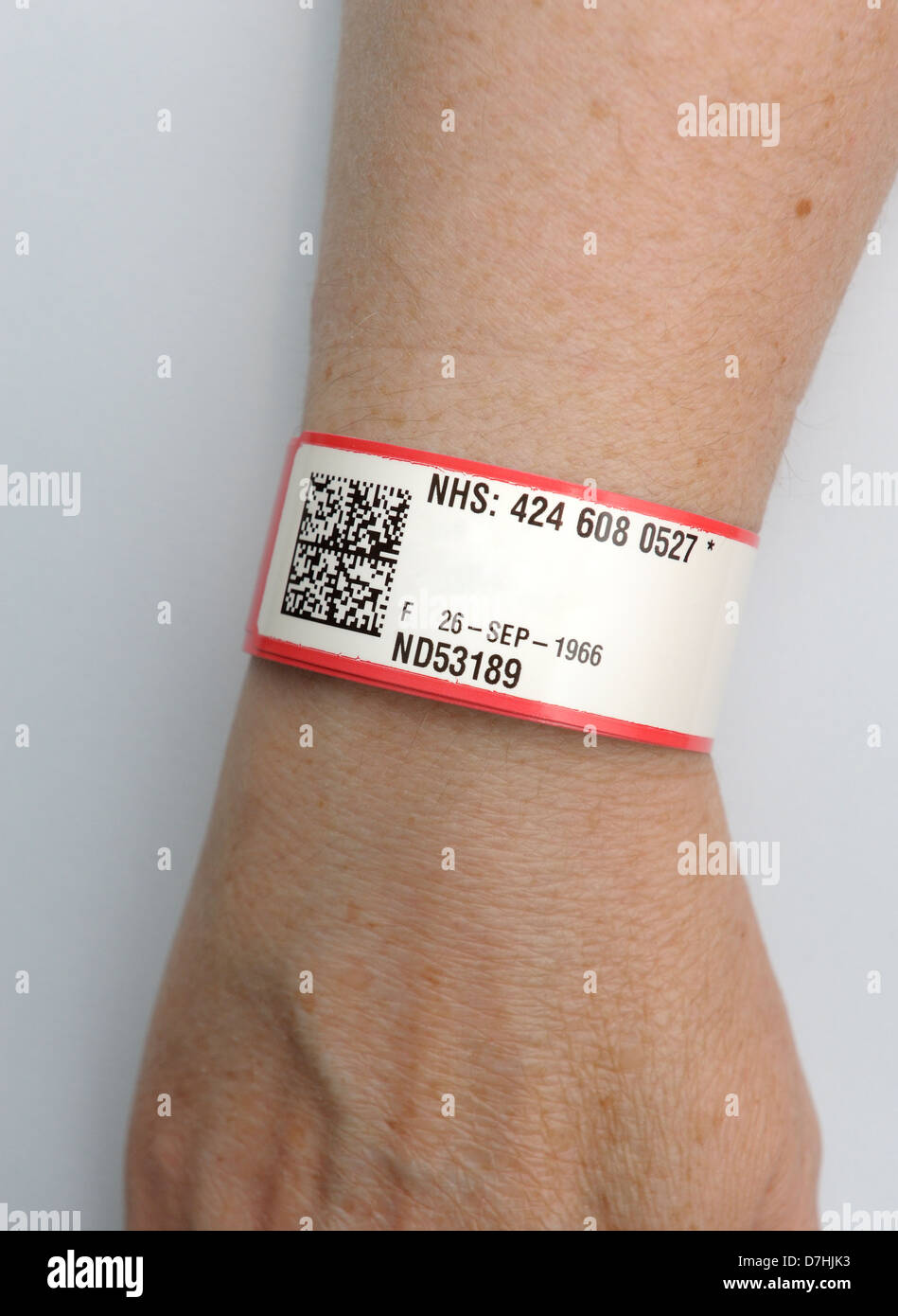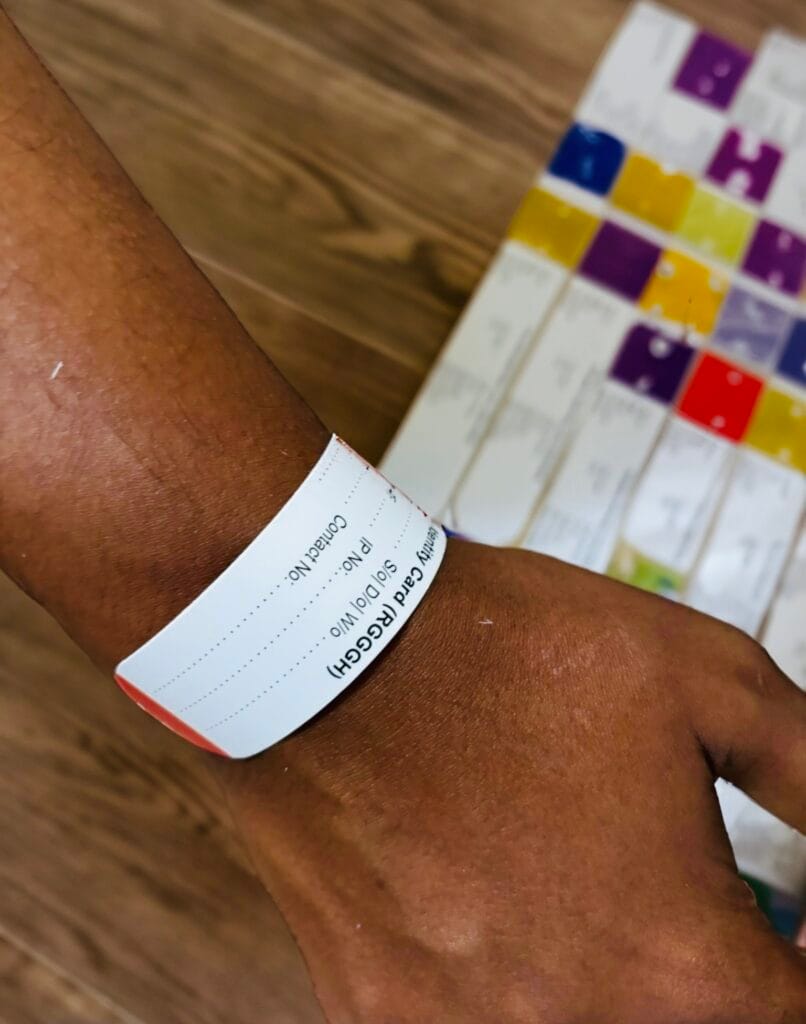Patient Identification Band: Ensuring Compliance and Safety And Security in Healthcare
Patient Identification Band: Ensuring Compliance and Safety And Security in Healthcare
Blog Article
Person Identification Bands: A Secret Tool for Improved Medical Accuracy
Individual identification bands represent an essential element in the pursuit of medical precision and client safety within medical care environments. The real degree of their influence on individual results and overall healthcare top quality warrants additionally evaluation.

Significance of Individual Recognition
Patient recognition is an important element of medical care that makes certain the safety and precision of medical therapy. Appropriate recognition methods are vital to prevent clinical errors, which can result in negative person end results, including incorrect medicine management, misdiagnosis, or inappropriate therapy strategies. The relevance of accurate individual recognition can not be overstated, as it offers as the foundation for reliable communication amongst health care companies.
In atmospheres where multiple clients are obtaining therapy at the same time, the risk of identity complication rises. Implementing durable recognition systems assists mitigate these threats and boosts person security. Patient Identification Band. In addition, accurate identification adds to the stability of clinical records, making sure that patient histories, allergic reactions, and previous therapies are correctly connected to the right individual.
Furthermore, conformity with governing criteria and accreditation demands frequently mandates stringent individual identification procedures, promoting a society of responsibility and high quality care. Eventually, the importance of client recognition transcends mere management jobs; it is an essential facet of providing top notch healthcare that prioritizes individual safety and improves scientific end results. Buying reliable recognition practices is not just beneficial-- it's critical in today's complex medical care landscape.
Types of Patient Identification Bands
In health care settings, numerous kinds of client identification bands are made use of to make sure precise recognition and enhance security. These bands function as a crucial device in preventing clinical mistakes connected to individual misidentification.
The most common type is the common wristband, generally constructed from long lasting plastic and printed with the client's name, day of birth, and a special identification number. These wristbands are frequently color-coded to convey particular details, such as allergic reactions or various other medical problems.
Another type is the barcode wristband, which integrates a scannable barcode connected to the patient's electronic health record. This innovation enables for effective information retrieval and verification throughout drug management and other scientific procedures.
Furthermore, RFID (Superhigh Frequency Recognition) bands are coming to be progressively preferred. These bands can communicate wirelessly with healthcare facility systems, permitting real-time tracking and recognition of people, thus improving and improving workflows patient safety.

Advantages for Doctor
Making use of client identification bands provides considerable advantages for doctor, improving both operational efficiency and person safety and security. These bands offer as a critical device in improving patient monitoring processes (Patient Identification Band). By guaranteeing accurate recognition, doctor can reduce the threat of administrative errors, such as mislabeling samples or misdirecting therapies, which can result in pricey delays and complications
In addition, person identification bands facilitate smooth communication amongst the healthcare team. With conveniently easily accessible and standardized patient details, suppliers can make informed choices quickly, enhancing overall workflow. This efficiency is especially important in high-pressure settings such as emergency departments, where time-sensitive treatments are vital.
The execution of identification bands likewise sustains compliance with regulative standards and finest techniques, thus decreasing the risk of legal consequences stemming from identification mistakes. The use of these bands improves information accuracy in digital health and wellness documents, leading to better care control and continuity.
Influence On Client Security
Precise client recognition is a keystone of health care safety and security, substantially minimizing the possibility of mistakes that can jeopardize patient well-being. Using person recognition bands is necessary in guaranteeing that each individual More Help receives the correct therapy, medications, and treatments. These bands function as a trusted recommendation point for health care experts, lessening the danger of misidentification, which can result in significant consequences such as wrong medicine management or surgical errors.
The implementation of standardized patient recognition bands adds to a culture of safety within healthcare setups. By giving clear, quickly understandable information, these bands sites aid to enhance the importance of validating individual identification at every phase of care. They promote communication amongst personnel members, guaranteeing that every person included in a patient's care is aware of their certain needs and needs.
In addition, making use of client recognition bands can improve the precision of electronic wellness records, better decreasing the possibility for errors - Patient Identification Band. By prioritizing patient security through efficient identification techniques, doctor can promote trust and confidence amongst patients, eventually causing better scientific end results and improved client complete satisfaction. The influence of appropriate person identification can not be overstated; it is an essential component of top quality healthcare shipment
Ideal Practices for Implementation
Efficient implementation of patient recognition bands is vital for improving patient safety and security and decreasing mistakes in medical care settings. Staff training is crucial; all group members have to comprehend the significance of accurate individual identification and the treatments for band application.
Second, the layout of the identification bands ought to focus on visibility and resilience. Bands have to be simple to review, consist of necessary useful site patient details, and endure day-to-day wear. Using color-coding can even more improve quick recognition.


Third, integrating electronic health and wellness records (EHR) with recognition band systems can improve workflow. Automated signals for inconsistencies in client identification can protect against prospective errors prior to they occur.
Last but not least, carrying out normal audits and comments sessions will assist identify locations for improvement. Involving staff in these conversations cultivates a culture of safety and security and accountability.
Verdict
In conclusion, individual recognition bands play an essential function in improving clinical precision and ensuring individual safety and security within healthcare systems. Adopting best practices for application fosters a culture of safety and security, ultimately leading to improved patient outcomes and greater trust in healthcare solutions.
Individual identification bands represent an important part in the search of clinical accuracy and client security within health care settings.Using individual identification bands provides substantial advantages for health care carriers, boosting both operational efficiency and patient safety. By prioritizing patient safety and security via efficient identification practices, medical care carriers can cultivate trust fund and self-confidence among patients, inevitably leading to much better medical outcomes and improved patient satisfaction.Reliable application of client recognition bands is vital for improving person safety and security and reducing errors in health care settings.In verdict, client recognition bands play a crucial duty in improving clinical accuracy and ensuring individual safety within medical care systems.
Report this page